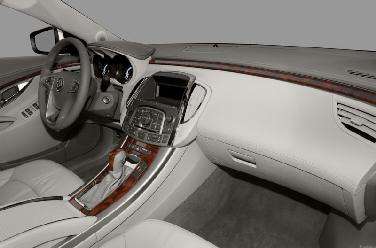Recent Articles
Popular Makes
Body Types
How To Read A Vin Number

Everyone has usually wondered about how to read a VIN, or Vehicle Identification Number but it is really just as easy as plugging the number into any of a dozen web sites that will decode the sequence with the click of a mouse. In the blink of an eye, you will see the car’s pedigree, its country of manufacture, its manufacturer, its body style, its engine, its year of manufacture, its assembly plant, and then its individual number on the manufacturing line. Let’s look at a quick example that will help you learn how to read a VIN number:
We found this VIN a 1996 Impala SS for sale to show you how to read a VIN number:
- 1= North America
- G1BL52= Chevrolet, Caprice Body with Airbags
- P= LT1 engine
- 1= Verification digit
- T= Year of Model
- 1996R= Arlington, Texas, plant of assembly
- 137531= Unique unit number of assembly
As you see, the VIN tells us nothing about the SS package, but it does confirm the manufacturer, the model, the engine, and the year of production when you are deciphering how to read a VIN number. The SS package will reflect in a code on the trunk lid, but that’s for another article beyond how to read a VIN number. In many ways, by know how to read a VIN number, you will see that a VIN is very much like a fingerprint: no two are the same.
Why is a VIN important? The VIN should confirm what stands before your eyes. In the world of automotive buying and selling, what you see is not always what you get, and the VIN is the primary means of authenticating a vehicle, and more importantly, authenticating its owner.
With the 17-character and digit combination VIN established in 1980 by the Department of Transportation and enacted by all automobile manufacturers in 1981, buyers and sellers, law enforcement agencies, and the insurance industry had one database as reference to establish the legal owner of any vehicle in the United States and Canada. Before 1981, each manufacturer had its own system of labeling cars, and should you consider dealing with a vehicle made before 1981, you will face a bit more research in the decoding process. Knowing how to read a VIN number will most help you on cars produced after 1981.
Part of know how to read a VIN number is knowing all of the locations where the VIN should be located on the car. On most cars, the VIN is located on the dash, at the base of the windshield, just in front of the driver. It will be stamped in metal or in some way permanently fixed to the car. The VIN will also appear on a sticker on the inside of the driver’s door and on a code sticker on the truck lid. All cases of VIN numbers should match, indicating that the door and the trunk are the original units that came with the car from the factory. Doors and trunk lids without the stickers may signal that the car was damaged and that replacement items were used. Knowing this information is a real benefit to knowing how to read a VIN number.
To car collectors and enthusiasts, the VIN makes a difference in dollars and cents. Replicas, clones and simple forgeries of classic cars flood the market daily, and unscrupulous sellers happily allow buyers to spend top dollar for something they believe is the real thing. Check any collector car auction, and you will see that the vehicles with the most documentation, those with “matching numbers,” meaning those whose VIN on the dash is the same as the numbers on the drive train, will always bring the highest prices.
In any private party sale, you should know how to read a VIN number to verify you are buying what you pay for. Many cars look alike. Some models make only the most subtle changes year to year, but the difference in value between a car three years old and one five years old can be significant. The VIN will confirm the car’s age. That same VIN should appear on the title for the car. Take as much time reviewing the paperwork for a vehicle as you did inspecting its mechanical parts. Everything should match. A VIN for a Chrysler should not be in the dash of a Ford, obviously. If the vehicle requires a smog certificate to change ownership, the VIN on the smog certificate must match the VIN on the car’s dash and on the title.
While hard to believe, some sellers will misrepresent the documentation of a vehicle to obtain money. They hope the buyers have forgotten their reading glasses. They hope trust will enter into the deal. Knowing how to read a VIN number will lead to an authentic title, and an authentic title leads to the owner who can legally sell the car. How often have we heard of someone trying to sell a car that does not belong to him? Usually those stories end with some time spent in the custody of the criminal justice system.
In a private party transaction, trust only the VIN numbers on the documents. If you have any question, contact your local DMV. Not only will they be impressed that you know how to read a VIN number but they will use the VIN to tell you if a car has a clean title or if it needs a smog check. If everything matches, you’re good to go.